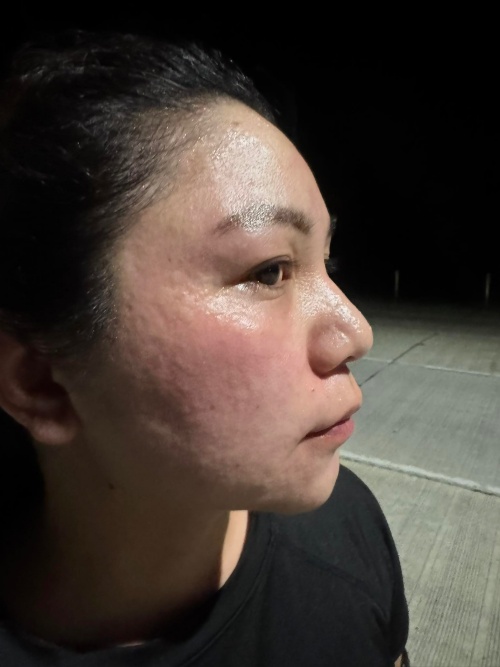Woman who ate shrimp almost dies after a few hours during night jog
Ahead of her night jog, Maria Louise Ragojo ate her favorite shrimp. Little did she know that after a few hours, she'd be in a life-and-death situation—with her hands and feet turning blue—from what she thought was a minor allergic reaction.
In a now-viral Facebook post, Ragojo recalled having nine pieces of shrimp cooked in lime soda and oyster sauce at their La Union restaurant at around 6:20 p.m.
She had no serious issues with eating shrimp before, except "a little lip itchiness" when eating a sinigang variant, during which she'd take an antihistamine.
But upon reaching past the three-kilometer mark of her jogging that started before 9 p.m., Ragojo recalled feeling a different kind of itch that quickly spread in her body.
Soon, she felt a burning sensation as her face got swollen, and not long after, she couldn't breathe so she had to be rushed to the hospital.
Her nails, palms, and feet turned blue, and she had extreme pain in her lower belly. She also began to shake with chills.

In an interview with PhilSTAR L!fe, she said she suffered anaphylaxis (or anaphylactic shock), which could have killed her had she arrived at the hospital a few minutes late.
"When I was in the ER, lying on the hospital bed, looking at my loved ones worried, I was terrified," she said, adding that she could hear her loved ones panicking about her skin turning blue.
"I couldn’t even speak. Hinang-hina ako. That’s when I realized it was serious. It was life and death," she recalled.
What is anaphylaxis?
Dr. Mae Ann Kho, an allergologist and immunologist, told L!fe that anaphylaxis is a severe, life-threatening allergic reaction that usually happens within minutes or a few hours of exposure to a possible trigger.
Kho noted that anaphylaxis has a number of causes, including food, medicine, dust, pollens, stings from animals like bees, ants, or jellyfish. Natural rubber latex used in gloves and balloons—and even exercise—may also cause anaphylaxis.
Kho said symptoms usually start with itching from a combination of at least two different organs.
Soon, rashes, flushing, and swelling happen in the eyes, lips, or ears. Kho noted that there are cases of anaphylaxis that don't have rashes present.

Individuals would then have difficulty breathing or wheeze, have weak pulses, chest pain,low blood pressure, and faint. They may also have severe abdominal pain, continuous vomiting, or diarrhea.
Kho noted that anaphylaxis can be deadly as it can cause closure of the airways.
As an emergency, Kho said it can be treated with epinephrine, a drug administered with an auto-injectable device.
"This can be given at the emergency room, and board-certified allergists will also teach you how to properly inject this medication," she said.
In preventing anaphylaxis, Kho advised the public to find out what they're allergic to and avoid them. They may undergo an allergy skin prick test to determine it.
"If you have a food allergy, it is important to read food labels and inform restaurants of your allergy," she said.

Following her anaphylaxis episode, Ragojo said her body still feels heavy. "May lagnat pa rin minsan, at tinutulog ko na lang talaga halos buong araw," she told L!fe.
What happened made Ragojo realize how precious life is, since she could have died during that fateful night. "That hit me hard. Even the smallest symptoms shouldn’t be ignored."
"That's what we’re used to hearing, right? 'Mild lang 'yan' or 'OA.' But this experience really opened my eyes: It’s never OA to prioritize your health," she said. "It’s not a waste of time or money to go to the hospital. Minsan, that decision can save your life."


